OF COWRIES AND CONCH SHELLS: Maldives and the Indian Ocean Networks
OF COWRIES AND CONCH SHELLS: Maldives and the Indian Ocean Networks
Marine molluscs commonly found at coastal as well as inland sites in the Indian Ocean region include cowries (Cypraea) and conch shells (Turbinella pyrum). These marine resources were used as a part of the subsistence strategy of coastal and island communities, but were also traded and adapted to ritual use.[1] Maldives is known as the primary source of cowry shells (Cypraea) and two of the species used for currency in India included the Cypraea annulis and Cypraea moneta.[2] The earliest evidence for the use of cowries as a medium of exchange in South Asia is provided by the third century BCE inscription from Mahasthan in Bogra district of present Bangladesh. Conch shells also have a long and complex history. As I highlight in this essay these natural resources of the sea need to be brought into discussions of maritime interactions.[3] An analysis of the finds of conch shells and cowries indicates several intersecting networks across the Indian Ocean involving not just trade and trading groups, but importantly also fishing and sailing communitie, as well as ritual specialists who travelled long-distance on ships. The archaeology and ancient history of the Indian Ocean has been my abiding research interest since the publication of my post-doctoral study in 1994 and it is these disciplines that I draw on here.[4]
Two of the objects in the MAHS online archive drew my attention for their unique conceptualization and aesthetic appeal, but most importantly for their close association with the ocean. Both objects include a conch shell of the species Turbinella pyrum. Object number GNI-HAD-6-SO12, in their database is described as a zoomorphic oil lamp carved from coral stone coated with a lime wash (Figure 1). The animal represented here possibly of the Bovidae family, or perhaps a varaha (the boar avatar of god Vishnu who rescued goddess earth from the depths of the cosmic ocean). This figurine, moreover, has a concave depression and carries a natural conch shell on its back which would have contained oil. The eyes were painted.
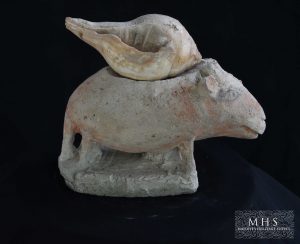
Figure 1: Zoomorphic oil lamp GNI-HAD-6-SO12
Another zoomorphic oil lamp (GNI-HAD-6-SO1), is also carved from coral stone and there is a convex cut out of its shoulders to hold a conch shell in the same was as object described above (Figure 2). It was found within a coral stone relic casket during road reclamation work in 2007, and documented by the MHS Team in 2019.
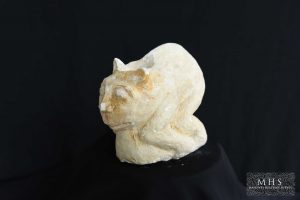
Figure 2: Zoomorphic oil lamp GNI-HAD-6-SO1
Both these objects were recovered from the Buddhist site of Boalha Dhandu Havitha. Havitha is the term used in the Maldives for an artificial mound that in former times functioned as a Buddhist stupa. The MHS team was able to document the remains of thirteen structures and nineteen small objects on this site on Fuvahmulak (Gnaviyani Atoll) in 2019. The site was visited by H.C.P. Bell (1851–1937) in 1922 and in 1946, and the largest havitha was excavated by Adam Naseer Maniku and three stone caskets were found.[5] In 2014, a coral stone casket (GNI-HAD-6-SO2) containing cowries, a conch shell and the second of these animal figurines was recovered during road reclamation work in the Boalha Dhandu Havitha area. According to information provided by local resident, Ali Adam, seven such mounds existed in this location. The Buddhist site was later repurposed as the site for the construction of a mosque (GNI-HAD-6-S6), a well, and a cemetery (GNI-HAD-6-S8).
The find of the zoomorphic lamps with conch shells together with deposits of cowry shells in relic caskets at Buddhist sites in the Maldives provides an interesting point of reflection for the study of maritime connections across the Indian Ocean. The first relates to the association of the conch shell in the conceptualization of seascapes in Buddhist and Hindu literary traditions. This leads to a discussion of finds of the marine mollusc shell in archaeological contexts in the Indian Ocean region; and finally, I highlight insights that are provided by resources of the sea with regard to maritime interconnections.
In Hindu mythology the conch shell is one of the fourteen treasures that emerged from the churning of the milky ocean by the gods and the demons who used the Naga king Vasuki as the churning rod in search of the elixir of immortality. Srinivas Reddy uses the cosmological perspective of the churning of the ocean narrative to interpret the Indic conceptualization of the waters.[6] The story is prominently sculpted on temple walls both in India and Southeast Asia from the sixth and seventh century onward underscoring the conch as a divine resource of the waters, which were themselves considered precious by the cultures of the Indian Ocean region.[7] Some of the finest representations of the churning of the ocean are found in Khmer art on the walls of temples at Angkor in Cambodia. The conch is also an attribute of the Buddhist goddess Tara as evident from finds of images in Vietnam.[8] Closer to our times, the churning of the ocean narrative is prominently represented in a modern work of art at Thailand’s Suvanaphum airport in Bangkok.
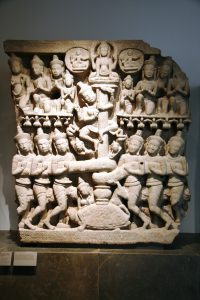
Figure 3: Twelfth century Churning of the Ocean sculpture from Prasat Phnom Da Takeo province, now in Musee Guimet, Paris (courtesy the author)
Archaeological evidence for the production and use of marine shell objects dates from third and second millennium BCE Bronze Age sites in the Indian subcontinent. Turbinella pyrum and other varieties of marine shell were used for ornaments such as beads and bangles, but more importantly as libation vessels for dispensing oils and liquids.[9] Ancient societies also used the blowing of the conch for providing music during rituals. This perhaps explains the find of an inscribed conch in a temple (site 29) at Nagarjunakonda in coastal Andhra. Nagarjunakonda in the Krishna valley provides crucial archaeological data on the religious landscape from the earliest Neolithic settlement in the third millennium BCE to the 16th century CE. More than thirty Buddhist monasteries, nineteen Hindu temples and a few medieval Jain shrines were unearthed in several seasons of archaeological excavations conducted by the Archaeological Survey of India at the site between its discovery in 1920 until its submergence under the waters of a dam on the river Krishna in 1960. A conch bearing a third/fourth- century inscription in southern Brahmi unearthed at Nagarjunakonda refers to Astabhujasvamin (Eight-armed Vishnu) indicating its association with a temple of the deity. (Figure 4).[10]
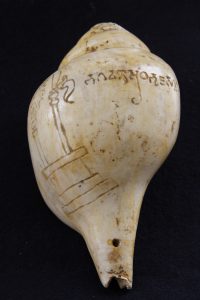
Figure 4: The inscribed conch shell from Nagarjunakonda (courtesy Archaeological Survey of India).
The conch also bears cakra or wheel on pillar, and axe with banner on pillar, both of these being important symbols of god Vishnu. The wheel on a pillar gained prominence as a symbol of the turning of the wheel by the Buddha during the sixth to twelfth century Dvaravati period in central Thailand, thus, showing the transference of sacred symbols between Hinduism and Buddhism. There are references in seventh-century temple inscriptions from south India to the conch being an important object of donation, as it was used in worship. Further evidence of the ritual importance of conch comes from the Cirebon shipwreck discovered on the north-west Java coast in 2003. It carried a diverse array of ritual objects including a piece of gold sheet with a Buddhist mantra (Art.148341), images, relic containers, pearls and conch shells (Art. 26472).[11]
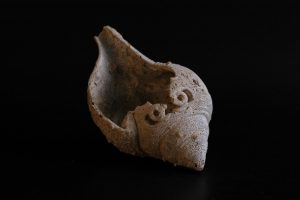
Figure 5: Conch shell from the tenth century Cirebon shipwreck site in the Java Sea: (http://cirebon.musee-mariemont.be/the-cargo/search-cargo.htm?lng=en&doc=1132 accessed on 7 July 2021. Copyright Musée royal de Mariemont 2009)
How are we to understand and interpret the historical importance of conch shells across such a wide variety of contexts in the Indian Ocean world? First, the exploitation and use of marine resources draws attention to the fishing and sailing networks in the Indian Ocean, as discussed at length elsewhere.[12] A more recent work proposes that attempts at writing a deep history of the sea entails discussion of interacting cultural encounters and shared knowledge, and experiences. The sea then becomes the site of intersecting networks that need to be articulated through histories of coastal shrines, seafaring experiences, narratives relating to the conceptualization of sea spaces, as well as material remains found at archaeological sites. Archaeological and inscriptional evidence from such sites as Nagarjunakonda in India and Fuvamulak in the Maldives show that these were multi-period, multi-religious sites that were embedded within both local links along the east coast of India, as well as further across the waters of maritime Southern Asia.[13] This short note on the cultural valences of marine molluscs in the region is an attempt in underscoring the dynamism and vibrancy of sea travel in the ancient period.
Further information on use of marine resources, coastal shrines and maritime interconnections have been discussed in Coastal Shrines and Transnational Maritime Networks Across India and Southeast Asia written by the author https://www.routledge.com/Coastal-Shrines-and-Transnational-Maritime-Networks-across-India-and-Southeast/Ray/p/book/9781138365674
References:
[1] Arati Deshpande-Mukherjee, Marine Molluscs at ancient settlements in the Deccan, Bulletin of the Deccan College Post-Graduate and Research Institute,. 66/67, 2006-2007: 259-283.
[2] Sanjay Garg, Non-metallic currencies of India in Indian Ocean Trade and Economies, Himanshu Prabha Ray and Edward A. Alpers, Cross Currents and Community Networks: The History of the Indian Ocean World, New Delhi: Oxford University Press, 2007: 248 – 262.
[3] Himanshu Prabha Ray, Coastal Shrines and Transnational Maritime Networks across India and Southeast Asia, London – New York: Routledge, 2021.
[4] Himanshu Prabha Ray, The Winds of Change: Buddhism and the Maritime Links of Ancient South Asia, New Delhi: Oxford University Press, 1994.
[5] H. A. Maniku, Archaeology in Maldives – An Historical Survey, A. S. Hassan edited, Proceedings of Fifth South Asian Archaeological Congress, Male’: National Center for Linguistic and Historical Research, 1993: 54.
[6] Srinivas G. Reddy, Seven Seas and an Ocean of Wisdom: An Indian Episteme for the Indian Ocean, Himanshu Prabha Ray edited, The Archaeology of Knowledge Traditions of the Indian Ocean World, Routledge, London – New York, 2021: 19 – 36.
[7] Joanna Williams, The Churning of the Ocean of Milk— Myth, Image and Ecology, India International Centre Quarterly, Spring-Summer 1992, Vol. 19, No. 1 – 2: 145 – 155.
[8] Himanshu Prabha Ray, Coastal Shrines and Transnational Maritime Networks across India and Southeast Asia, Routledge, London – New York, 2021: 130.
[9] Jonathan Mark Kenoyer, Shell working Industries of the Indus Civilization: A summary, Paléorient, vol. 10, no. 1, 1984: 49-63.
[10] Ray, Coastal Shrines: 56.
[11] Horst H. Liebner, The Siren of Cirebon: A Tenth-Century Trading Vessel Lost in the Java Sea, PhD diss., University of Leeds, 2014: 193 – 5.
[12] Himanshu Prabha Ray, The Archaeology of Seafaring in Ancient South Asia, Cambridge University Press, Cambridge, 2003: 30 – 46.
[13] Ray, Coastal Shrines: 2.

